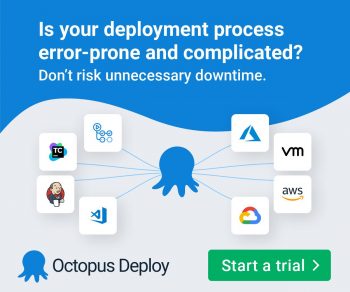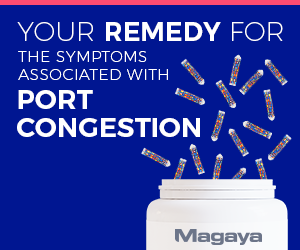Introduction
This article explores Ryan Cameron’s role in digital transformation at CMBA Architects, his impact on the broader field of architecture, engineering and construction (AEC), and the steps the firm has taken to modernize workflows through technology.
The Rise of Digital Transformation in AEC
When it comes to digital transformation in the context of the AEC industry, I like to summarize it by saying we’re simply modernizing our practice. Our philosophy is to “Make it simple to innovate with complex technology.” With that in mind, our strategies include integrating mature technologies into our workflows to ease productivity and workforce needs, while making it fun to work at CMBA Architects. We start with a shared vision. Every three years we create a technology roadmap to help guide us on our journey to improving our services. Creating a strategic plan with quarterly goals has proved valuable for us.
Digital Services
It’s hard to avoid talking about Building Information Modeling in today’s industry. While BIM has already gained traction for roughly two decades, we recognize the potential to go beyond 3D modeling and collaboration tools by spearheading efforts to utilize the data for clients. Under a “+” designation, we branded this effort BIM+ to keep our team thinking about what else we could be doing with our BIM process. We recently formed a 3D Reality Capture team and are currently testing ways we can use point cloud data that our team creates, both in terms of coordination but also how our clients can use it for their purposes, such as insurance coverage. We recently helped a client work with their insurer after a storm had damaged their gymnasium by providing a laser scanned model of the damaged area to all stakeholders prior to the estimates. We’re also really excited about a theme park we scanned that proved essential in some renovation work we’re doing for that client. This is now a new fee-based service we offer that didn’t exist at the firm three years ago. By incorporating it into the firm’s design process, and delivered to the cloud, we’ve enabled staff to streamline project development, reduce errors, and improve coordination with consultants and contractors. The ability to share and update information in real-time across all project stakeholders has minimized costly mistakes during construction and allowed for more accurate project planning.
We’re currently in the early stages of our digital twin development as well. This continues to add to our BIM+ philosophy by asking ourselves, “What more could we be doing with our data model?” Digital twins allow for the creation of a virtual replica of a building that can be used for monitoring, analysis, and optimization throughout the building’s lifecycle. CMBA has been working on developing a prototype for digital twins as an add-on service, which will enable clients to better manage and maintain their buildings after construction is complete.
In addition to digital twins, the firm has prioritized sustainability in his digital transformation efforts. He has collaborated with the firm’s sustainability guru Eric Coleman and BIM+ Leader Matt Kreutzer to integrate key sustainability goals into the firm’s BIM templates. This ensures that sustainable design practices are embedded into the early stages of every project, allowing for more environmentally conscious outcomes. By incorporating sustainability into BIM workflows, we are helping CMBA Architects reduce their environmental impact while also providing clients with energy-efficient and cost-effective solutions. It’s worth noting that CMBA Architects won the Excellence in Energy Efficiency award for New Construction for K12 in Iowa in 2023 and we are currently working towards the firm’s first Net Zero building. This is an exciting chapter in our firm’s history as we transform our business of design.
Evolve through Learning
Every industry is constantly changing and we evolve to meet new challenges. We need the industry to build a culture of learning. This can lead to a culture of sharing and ultimately a culture of leadership. Aside from implementing new processes and technologies at CMBA, earlier this year I chaired the National AIA Technology in Architectural Practice (TAP) Symposium and we heard from recognized experts in the industry like Dr. Mehdi Nourbakhsh Ph.D and Phil Berstein, FAIA. We discussed artificial intelligence and its impact on the AEC industry, particularly strategy and workforce implications. Three takeaways that stood out were:
- Technology Strategic Planning
- Assess Processes and find areas for improvement
- Opportunities for stakeholder engagement and learning sessions
- I. Governance Policy
At our firm we strive to create the best work environment possible and whatever technology we need to incorporate to make our firm the most fun for staff, we implement. My role is to help enable stakeholders to initiate new workflows in our practice and help everyone, myself included, to learn about better ways to design. Our leadership team allows us to set aside time for learning sessions throughout the year to help our staff stay current on the latest tools in our workflow. We are working towards a more complete client experience between offices that helps solidify our brand promise.
Conclusion
At the end of the day, we need more solutions from architects than ever before. We need visionary leadership to digital transformation that reshapes our industry’s workflows and services to prove what’s possible in the AEC industry. As technology continues to evolve, architects need to embrace digital tools to create better designs for the future. CMBA continues to ensure that all team members are equipped with the skills and tools they need to succeed in a digital-first environment. This emphasis on education and collaboration has been critical to our firm’s ability to adapt to new technologies and stay competitive in a rapidly changing industry.

















